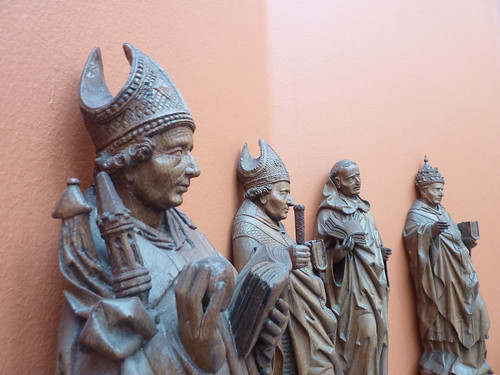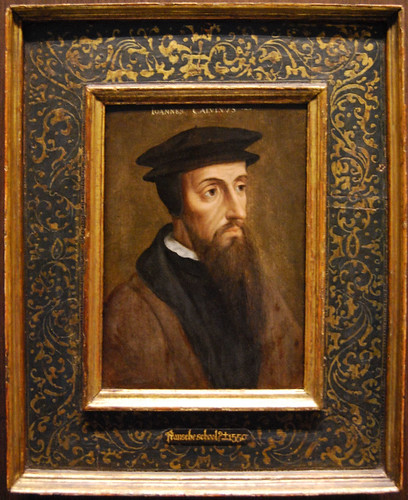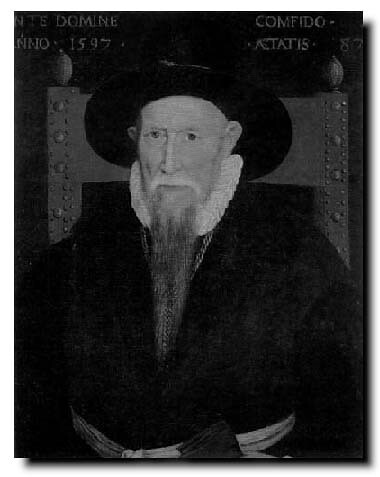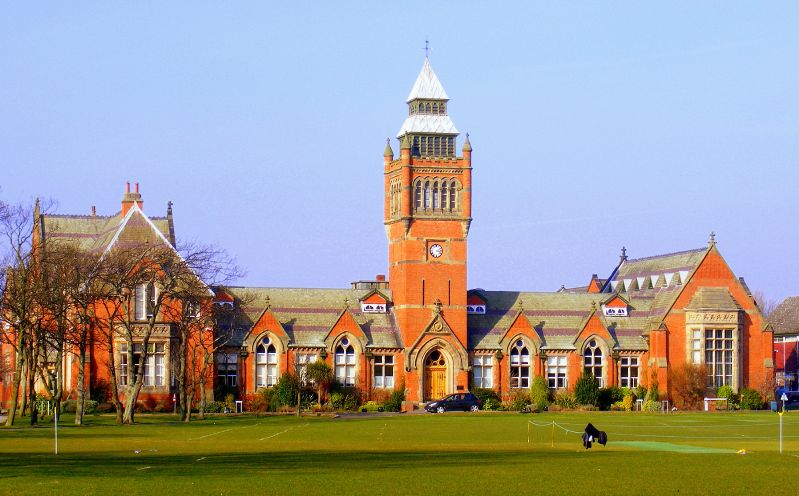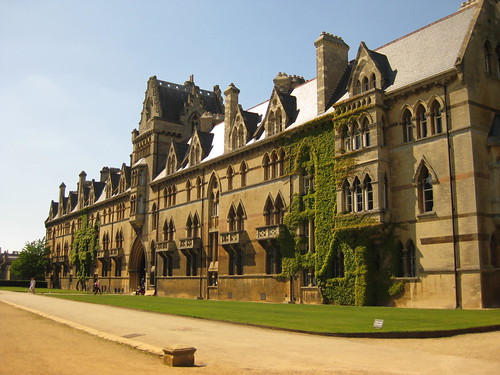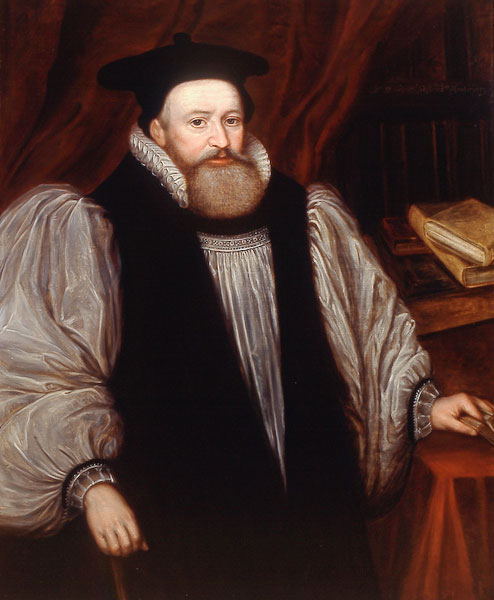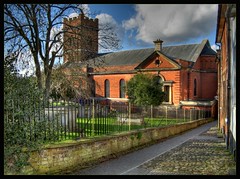When I began (January 1st, 2011) these blogs on the various KJV translators, my stated aim was to examine their linguistic credentials, devoting one of these men to each week of the year 2011. The questions I asked were three:
- What can we learn about him?
- How much scholarship did he really have?
- Do our contemporary scholars easily compete with his expertise?
In the process of researching these KJV men, I have been somewhat drawn away from these central questions, in the desire to show the social and political context in which the translators’ worked, and to notice the issues they were grappling with, in their day.
Remembering the maxim, “Keep on making the main thing the main thing,” I will hereafter aim to concentrate on answering the two most important questions: (1) What academic qualifications and experience did each translator have in the area of language and translation? And (2) What contribution did each make to the translation itself, rather than to the circumstances in which it emerged?
St Johns Collegewikipedia
Academic Background
William Barlow was born in London, date unknown (between 1555 and 1562?). His family had long settled in Barlow, Lincolnshire - near Manchester. His mother was Alice Field. In 1580 he was a student at St John's College, Cambridge, and then graduated in 1584 from Trinity Hall, Cambridge. He gained an MA in 1587 and became a fellow there in 1590. He went on to graduate in Theology with a BTh in 1594, proceeding five years after to a doctorate in 1601. Perhaps by then he was in his late 30’s.
Ecclesiastical appointments
In 1597, Archbishop Whitgift made him sinecure Rector of Orpington in Kent. The next year he became chaplain to Whitgift. In 1601, he received a prebend (supported from a benefice, as a canon) at Chiswick, linked to St Paul’s cathedral. This continued until he became Bishop of Lincoln. At the same time he preached before Queen Elisabeth, as one of her chaplains. In 1603, he became Prebendary of Westminster and Dean of Chester. In 1605, whilst being Rector of St. Dunstan’s - one of the London parishes, in the East - Dr. Barlow was made Bishop of Rochester. He was promoted to the wealthier see of Lincoln in 1608, which he held until his death. He had hoped to become bishop of London, but death intervened in 1613.
He was one of the numerous ecclesiastics of that day, who were courtiers by profession, and studied with success the dark science of preferment (McClure)
Hampton Court Conference
Hampton Court Palaceflickr.com
The King commissioned the translation at the Hampton Court conference of 14–18 January 1604. As Dean of Chester, Barlow had the right to attend. He was actively involved in the preliminary arrangements. Also, he was commissioned to write the official account of these proceedings. This was titled The Sum and Substance of the Conference, Which It Pleased His Majesty to Have with the Lords, Bishops and Other of His Clergy at Hampton Court.” The account was deliberately skewed in favour of the bishops’ cause against the Puritans. Dr. Barlow’s account was apparently biased so as to make the Puritans’ statements of grievances appear as weak and witless as possible.
His ability with words
We catch a glimpse of Barlow’s preaching ability in the record of a sermon he gave at St Paul’s Cross on the Sunday after the Gunpowder plot was discovered. It aimed to blow up the King, together with the entire establishment of nobles,lords and commoners in both Houses of Parliament. Had this been successful it would have had as much and possibly more significance to future history than the effects of 9/11!!
Barlow’s text was Psalm 18:50
Great deliverance giveth He to His King, and sheweth mercy to His anointed, to David, and to his seed for evermore.”Of Guy Fawkes Barlow said:
To make himself drunk with the blood of so many worthies . . . Such heaps he had laid in of billets, faggots, large stones, iron crows, pickaxes, great hammer heads, besides so many barrels of gunpowder . . . Not manlike to kill but beastlike to . . . tear parcel meal the bodies of so many personages . . , this whirling blast would have been unto our sacred king . . . as the whirlwind and fiery chariot of Elias, to have carried up his soul to heaven.”
The Translation Process
William Barlow chaired the second Westminster company (translating Romans to Jude) This was a group of seven divines, who thus worked on all the Epistles of the New Testament. Others on the panel included John Spencer (Pres. Of Corpus Christi College, Cambridge), Roger Fenton, Thomas Sanderson, Michael Rabbett, Ralph Hutchinson (President of St. John’s College, Oxford) and William Dakins. St John's College Old Library.flickr.com
An interesting question is “How much scholarship did Barlow really have?” His studies at undergraduate level would have included Latin and Greek language. The wider aims and purpose of St John’s College , founded in 1511, were (according to it statutes) to promote education, religion, learning and research. Learned discourse regularly took place in written (sometimes also spoken) Latin. Greek was a necessary subject in which to matriculate, when qualifying for University study. If Barlow majored, say, in mathematics, then he would still have acquired serious language attainment when moving on to divinity study in 1594, at Trinity College (see summary above). During further years of study which led to his doctorate in divinity (1601), Barlow would have acquainted himself with the Greek and Latin writers of the early centuries. These were church ‘fathers’ like Tertullian and Augustine (writing in Latin) and Chrysostom (writing in Greek). With such a background he would have been able to ‘keep up with’ a more erudite scholar in his company, like Ralph Hutchinson (who seems to have been appointed one of the final review panel examining the work of all the rest).
Barlow‘s knowledge of how the early church ‘fathers’ used and quoted the New Testament would probably not have been unusually deep. Such knowledge is key to understanding how Christian scholars read the New Testament in the years preceding the earliest preserved uncial manuscripts. Barlow did publish several books and pamphlets but apparently not now accessible. Someone who spent so much time and energy wheeling and dealing in ecclesiastical politics would not have been able to deepen and perfect his knowledge of Text. However, his general competence as a translator of the Greek language would have been rightly assumed.
William Barlow died in his episcopal palace of Buckden, and was buried in 1613.
Source: Knighton, C. S., ‘Barlow, William (d. 1613)’, Oxford Dictionary of National Biography, Oxford University Press, Sept 2004; online edn, Jan 2008
Previous Index



